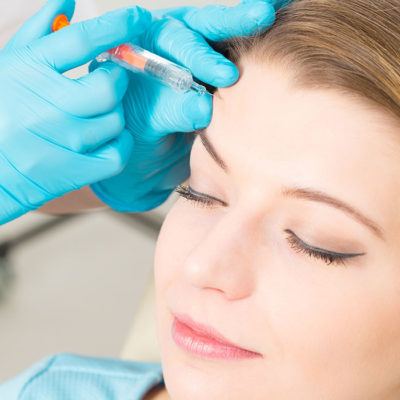
02 Oct Resistance to Botulinum Toxin (Botox)
What is Botox?
Botulinum Toxin (commonly called Botox, although that is a specific brand, Allergan from America) is a minimally invasive injection that prevents and treats wrinkles. Small injections block the nerve impulses that trigger wrinkle-causing muscle contractions. If you have an experienced injector the results look very natural. Botox’s effects are temporary and experienced for 4 months after the injection depending on frequency and efficiency of injection.
Botox is used to cure many types of facial wrinkles such as:
- frown lines (glabellar wrinkles – vertical lines between the eyebrows)
- forehead wrinkles
- crows’ feet (at the edge of the eyes)
- bunny lines
However, Botox is used for many other cosmetic procedures and medical conditions like:
- excessive sweating (hyperhidrosis)
- turkey neck (platysmal banding)
- eyebrow shaping
- lifting the nose tip
- gummy smiles
- jawline contouring (masseter muscle injections)
What causes resistance to Botox?
The immune system protects us from infectious agents. When presented with a potentially infectious agent, the body must quickly decide if it needs to make neutralising antibodies. This is achieved through a strict two-step hierarchical process – the body first determines whether the agent is dangerous and then distinguishes ‘foreign’ from ‘own’.
If your body determines the agent to be dangerous, it doesn’t work as well, you might need more to achieve the same effect, or your muscles might still tense up after the Botox injections.
Resistance to Botox can be a serious issue as there are many medical conditions that Botox is used to cure like musculoskeletal disorders, blepharospasm or spasticity after a stroke.
Other ways in which immunity occurs is when the product has a low purity and when there are unnecessary proteins in the injection. In older patients’ levels of elastin and/or collagen in the skin will be lower causing Botox to provide underwhelming results.
However, resistance to Botox only occurs in approximately 0.5-3% of users and even then, the effects of Botox can still be experienced but at a diminished level.
How to avoid developing resistance to Botox?
Decreasing your chances of developing resistance can be achieved by reducing the cumulative dose, avoiding booster injections and extending time between injections. Moreover, your cosmetic injector should use the least immunogenic formulation.
How long does it take for Resistance to fade and can it be reversed/slowed?
Botox resistance can fade although it typically takes a couple year break. Depending on the location Botox is injected the chance of resistance occurring is different which should be taken into account if you are getting injections in different areas.
How can I check if my injector is looking out for resistance?
Rosalie is a Cosmetic Registered Nurse with over 38 years experience in the medical industry. After undertaking advanced injectables training at the Australasian Academy of Cosmetic Dermal Science under the renowned Plastic Surgeon Dr Jason Oates, Rosalie opened the Refresh Rejuvenate Clinic in 2014.
Rosalie continues her medical training working as a Registered Nurse and holds additional post graduate certifications in cosmetic nursing including Advanced Dermal Filler, Advanced Anti-wrinkle Injectables, Advanced Cosmetic Nurse Injector, IPL and Laser Safety Officer, VOC Certificate in Cosmetic Nursing, Advanced Life Support and IV Cannulation. As a Registered Nurse (RN), Rosalie also is qualified as a Rural and Isolated Practice Endorsed Nurse (RIPEN) and First line emergency care (FLEC) nurse.


